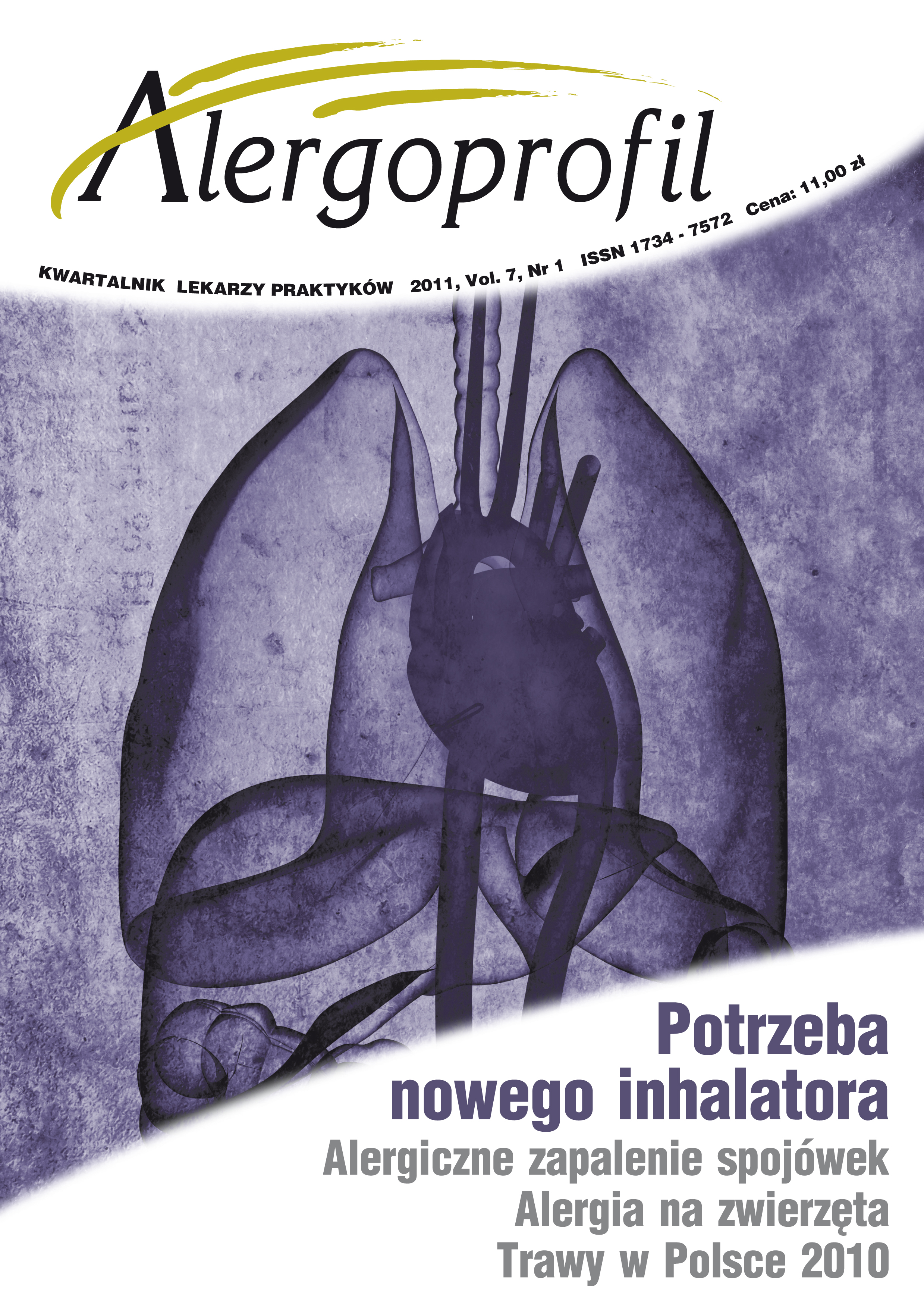Stężenia zarodników grzybów wywołujących alergie podczas burzy
##plugins.themes.bootstrap3.article.main##
Abstrakt
The results of the analysis of the number of days with thunderstorms in 56 stations all over Poland in the period of 19 years, showed that on average there are 24 days during a year with a thunderstorm. Most of the thunderstorms occur in Poland in a warm part of the year (mainly summer) and the number of days with thunderstorms increases from the northwest towards the southeast. Depending on the meteorological conditions the different types of storms are created. The inter-massive storms are typical for the summer period and appear inside a homogeneous air mass. Typical inter-massive storms often occur locally during hot weather in summer, generally in the afternoon. Asthma admissions have been reported to increase during thunderstorms. In some cases, this has been attributed to rises in pollen or fungal spore (particularly Alternaria and Cladosporium) counts. A combination of sensitivity to grass pollen and fungi along with exposure to high levels of these allergens may account for the epidemics of acute asthma occurring during or in proximity to thunderstorms.
Pobrania
##plugins.themes.bootstrap3.article.details##
Copyright: © Medical Education sp. z o.o. This is an Open Access article distributed under the terms of the Attribution-NonCommercial 4.0 International (CC BY-NC 4.0). License (https://creativecommons.org/licenses/by-nc/4.0/), allowing third parties to copy and redistribute the material in any medium or format and to remix, transform, and build upon the material, provided the original work is properly cited and states its license.
Address reprint requests to: Medical Education, Marcin Kuźma (marcin.kuzma@mededu.pl)
Bibliografia
2. Allit U.: Airborne fungal spores and the thunderstorm of 24 June 1994. Aerobiologia 2000, 16: 397-406.
3. Anderson W., Prescott G.J., Packham S., Mullins J., Brookes M., Seaton A.: Asthma admission and thunderstorms: a study of pollen, fungal spores, rainfall, and ozone. Q. J. Med. 2001, 94: 429-433.
4. Bellomo R., Gigliotti P., Treloar A., Holmes P., Suphioglu C., Singh M.B. et. al.: Two consecutive thunderstorm associated epidemic of asthma in the city of Melbourne. The possible role of rye grass pollen. Med. J. Aust. 1992, 156: 834-837.
5. Bielec-Bąkowska Z.: Long-term variability of thunderstorm occurrence in Poland in the 20th century. Atmospheric Research 2003, 67-68: 35-52.
6. Dales R.E., Cakmak S., Judek S., Dann T., Coates F., Brook J. R., Burnett R.T.: The role of fungal spores in thunderstorm asthma. Chest 2003, 123: 745-750.
7. Egan P.: Weather or not. Med. J. Aust. 1985, 142: 330.
8. Girgis S.T., Marks G.B., Downs S.H., Kolbe A., Car G.N., Paton R.: Thunderstorm-associated asthma in an inland town in south-eastern Australia. Who is at risk? Eur. Respir. J. 2000, 16: 3-8.
9. Hirst J.M.: Changes in atmospheric spore content: Diurnal periodicity and the effects of weather. Trans. Br. Mycol. Soc. 1953, 36: 375-393.
10. Hirst J.M., Stedman O.J.: Dry liberation of fungus spores by raindrops. J. Gen. Microbiol. 1963, 33: 335-344.
11. Leach C.M.: An electrostatic theory to explain violent spore liberation by Drechslera turcica and other fungi. Mycologia 1976, 68: 63-86.
12. Lewis S.A., Corden J.M., Forster G.E., Newlands M.: Combined effects of aerobiological pollutants, chemical pollutants and meteorological conditions on asthma admissions and A&E attendances in Derbyshire UK, 1993-96. Clin. Exp. Allergy 2000, 30: 1724-1732.
13. Marks G.B., Bush R.K.: It’s blowing in the wind: new insights into thunderstorm-related asthma. J. Allergy Clin. Immunol. 2007, 120: 530-532.
14. Marks G.B., Colquhoun J.R., Girgis S.T., Koski M.H., Treloar A.B., Hansen P.: Thunderstorm outflows precedings epidemics of asthma during spring and summer. Thorax 2001, 56: 468-471.
15. Mitakakis T.Z., Barnes C., Tovey E.R.: Spore germination increases allergen release from Alternaria. J. Allergy Clin. Immunol. 2001, 107: 388-390.
16. Packe G.E., Ayers J.G.: Aeroallergen skin sensitivity in patients with severe asthma during a thunderstorm. Lancet 1986, 1: 850-851.
17. Pulimood T.B., Corden J.M., Bryden C., Sharples L., Nesser S.M.: Epidemic asthma and the role fungal mold, Alternaria alternata. J. Allergy Clin. Immunol. 2007, 120: 610-617.
18. Venables K.M., Allit U., Collier C.G., Emberlin J., Greig J.B., Hardaker P.J.: Thunderstorm-related asthma-the epidemic of 24/25 June 1994. Clin. Exp. Allergy 1997, 27: 725-736.

